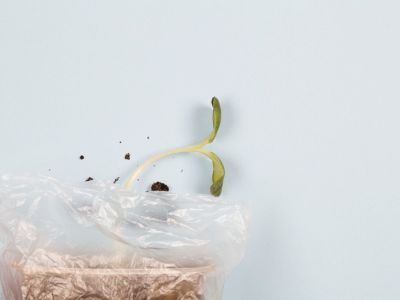What Do You Need for Starting Seeds in a Bag?
In northern climates, seeds need to be started indoors for the best chance at germination. Other factors besides cold temperatures can affect sprouting, such as rain and wind, which may wash away seeds. To keep control of your future plants and get them ahead for the growing season, try the baggie seed starting method. It’s cheap, easy, and effective. You can use a clear plastic bag that has a zipper, or not. Even a bread bag will work, provided it doesn’t have holes. Remember, the two most crucial items for seed germination are moisture and heat. By starting seeds in a bag, you can easily provide both, plus light if the variety of seed is one that is photosensitive. In addition to the bag, you will need some material that is moderately absorbent. This might be a bit of towel, coffee filter, paper towel, or even moss. Ta-da, you now have a perfect seed incubator.
Tips on Plastic Bag Seed Starting
It is extremely helpful if starting several kinds of seed to mark the bags first with permanent marker. You should also consult seed packets to see if they need dark or light to germinate. Next, moisten your absorbent material. Get it good and wet, then squeeze out excess water. Lay it out flat and place seeds on one side of the material and then fold over. Put the seeds in the plastic bag and seal it somehow. If the seeds need light, place them by a bright window. If not, put them in a drawer or cupboard where it is warm. You can use a seed germination mat if you wish since they produce a fairly low temperature and shouldn’t melt the bags. If so, put a dish towel over the mat first before placing the bags on top.
Caring for Seeds in Plastic Bags
Germination times will vary when using the baggie seed starting method, but will generally be faster than soil planting. Every five to seven days, open the bag to release excess condensation which can contribute to damping off. Keep the absorbent material moderately wet when needed. Some pros recommend a mister bottle filled with a 1:20 water/hydrogen peroxide solution to spray on seeds and prevent mold. Another suggestion is chamomile tea to prevent mildew problems. Once they have sprouted, use toothpicks as dibbles and carefully transplant seedlings to the soil to grow on until time to plant out.
